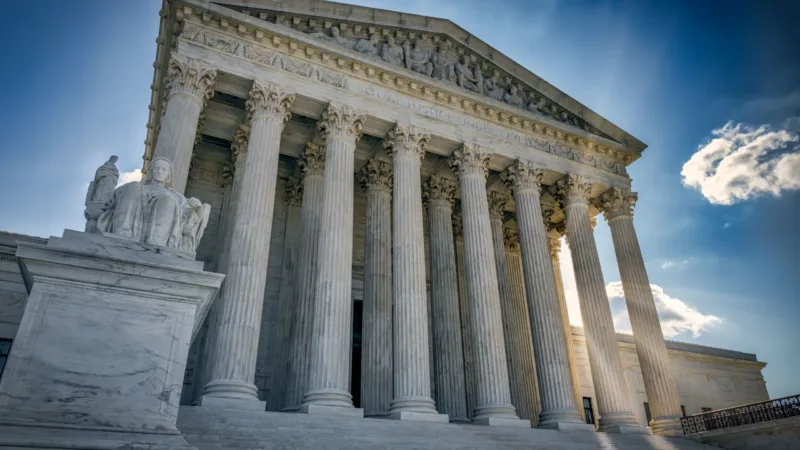On June 28, 2024, the U.S. Supreme Court issued a landmark ruling in Loper Bright Enterprises v. Raimondo and Relentless Inc. v. Department of Commerce (collectively referred to as “Loper Bright“), overturning the 40-year-old Chevron doctrine established in Chevron U.S.A. v. Natural Resources Defense Council Inc. (“Chevron”). The 6-3 decision, authored by Chief Justice John Roberts, concluded that under the Administrative Procedure Act (“APA”), courts must exercise independent judgment in deciding whether an agency acted within its statutory authority. This ruling blows up the administrative law landscape and does away with, for the most part, the deference traditionally given to various federal regulations.
The new landscape is of particular importance to in-house lawyers and the companies they represent.
What was Chevron?
In the 1984 Chevron decision, the Court established the “Chevron” doctrine, a legal principle that directed courts to defer to a federal agency’s interpretation of an ambiguous statute that it administers. The Court created a two-step framework:
- First, courts must determine whether Congress’s intent on the issue was clear; if the statute was found to be ambiguous, then,
- Second, courts should defer to the agency’s interpretation as long as it was reasonable. This doctrine significantly empowered federal agencies by allowing them considerable leeway in interpreting and implementing ambiguous statutory provisions (which are many), putting a big thumb on the scale when businesses went up against an agency.
What happened?
Last month, the Court flipped 40 years of law on its head, rejecting the practice of courts deferring to an agency’s interpretation solely because the statute is ambiguous. The decision emphasizes that courts, not agencies, are responsible for interpreting statutory provisions as the APA requires that “the reviewing court” decide all relevant questions of law. The ruling clarifies that statutory ambiguities are not some implicit delegation of interpretative authority to agencies.
According to the Court, agencies lack special competence in resolving statutory ambiguities, which is a judicial function. Instead, courts must now rely on traditional tools of statutory construction to independently determine the best interpretation of ambiguous statutes. While agency interpretations can still be considered, they are not given the authoritative weight they once held under Chevron. Such interpretations may still be given “respect” based on their persuasiveness, thoroughness, and consistency, but such respect is discretionary. All of this goes to restoring, according to the Court, the judiciary’s traditional role in interpreting statutes.
What does it mean?
To start, the ruling underscores the need for explicit congressional delegation of authority to agencies. Courts will honor clear and explicit delegations but will no longer infer delegation from statutory silence or ambiguity. This shift encourages more precise legislative drafting and reduces broad grants of interpretative power to agencies.
Businesses can expect greater judicial scrutiny of agency actions. Courts will now independently interpret statutes, leading to more legal challenges against agency regulations because the thumb is off the scale. This will empower businesses to offer their own courts their own interpretations of statutory ambiguities, potentially giving them the winning hand in judicial proceedings.
Unfortunately, this development also introduces a lot of uncertainty regarding existing regulations and agency interpretations of ambiguous statutes. Businesses must prepare for potential changes in regulatory requirements and enforcement. Agencies, on the other hand, will need to provide clearer justifications for their interpretations and actions, ensuring they align with statutory provisions. Lastly, judicial review of agency actions will almost certainly become more prolonged and complex, potentially delaying the implementation of regulations and enforcement actions. All leading to a frustrating lack of certainty for businesses and in-house lawyers about the “rules of the road” in their regulated space.
Examples of what may be affected by the decision
Here are just a handful of regulatory matters and issues that will be impacted:
- Environmental regulations (the decision will affect how environmental regulations are interpreted and challenged, particularly under the Clean Air Act).
- Consumer Financial Protection Bureau (CFPB) (the ruling will have significant implications for the CFPB, given its history of very aggressive statutory interpretations. The CFPB will face more legal challenges to its regulations and an increased likelihood that courts will invalidate or modify regulations that push the boundaries of the agency’s statutory authority).
- Labor and employment law (labor and employment law rely heavily on guidance from agencies like the Department of Labor, OSHA, EEOC, and the NLRB, and will be significantly affected by Loper Bright. Rules on overtime, worker classification, joint employment, pregnancy accommodations, prevailing wages, and noncompete agreements will face heightened judicial scrutiny).
- The Federal Trade Commission (FTC) (must now convince courts that its interpretations are not just permissible but the “best” ones under the statute. This includes its expanded interpretation of “unfair methods of competition” under Section 5 of the FTC Act and its efforts to enforce its new non-compete rule).
- The DOL’s ESG rule (the rule allowing benefit plan fiduciaries to consider ESG factors when analyzing investment options that will be impacted by the decision).
- Other (given the breadth of the ruling, other agency regulations affected will include tax regulations, OFAC regulations, banking, USPTO, health care, FDA, USDA, FCC, antitrust, local regulations, and more). Literally any agency regulation is now subject to challenge to the extent a court relied on Chevron deference in upholding the same.
- Industry self-regulation (the ruling may create opportunities for industry self-regulation as agencies’ regulatory authority is curtailed).
What should in-house counsel expect?
The Loper Bright decision will lead to increased litigation against agency regulations, both directly under the APA and in private lawsuits where defendants rely on agency regulations as defenses. The decision, combined with the Court’s recent ruling in Corner Post v. Federal Reserve, extending the statute of limitations for challenging agency actions, will result in a surge of lawsuits challenging federal regulations.
The lack of uniform deference to agency interpretations will, over time, lead to inconsistent rulings across different jurisdictions, creating compliance challenges for businesses operating in multiple states. Likewise, employers and businesses involved in litigation based on agency interpretations will have additional legal arguments for challenging those interpretations. Courts now have more discretion to reject agency interpretations that do not represent the “best reading” of the statute. This means judge shopping will be important to increasing the chances of a favorable result.
More importantly, although the decision overturned Chevron itself, the Court claimed not to overturn the past 40 years of judicial decisions made using Chevron deference, i.e., the change in interpretive methodology did not “call into question” those decisions because the principle of statutory stare decisis still applies. That is a difficult concept to grasp for many, including judges, and will likely mean new challenges to a wide host of existing agency interpretations as parties take a shot at getting courts to now interpret statutes differently than agencies. Additionally, agencies may interrupt current and ongoing rulemaking and shift focus giving guidance, such as FAQs and notices. This could lead to more frequent (but potentially less helpful) regulator guidance to an impacted regulated industry.
What should I do next?
The following next steps are important for in-house lawyers:
- Don’t panic. Nothing is changing immediately and there is no need to believe the sky is falling.
- Consult outside counsel with expertise in any particular regulation and develop a strategy to deal with any anticipated changes or uncertainty or – more importantly – to determine if there is a regulation you want to challenge.
- Monitor judicial developments and stay informed about judicial decisions interpreting statutes relevant to your industries.
- Build out or enhance the company’s government affairs and advocacy function. You will have more opportunities to affect legislation impacting your company.
- Work with your trade association to share learnings and amplify your company’s voice.
- If there is an agency interpretation that is problematic for the company, there has never been a better time to challenge that agency interpretation.
The Loper Bright decision is a massive shift in administrative law, emphasizing judicial independence and reducing agency authority in statutory interpretation. While the full impact of the decision will unfold in the next few years, in-house lawyers (and their companies) must adapt to this new legal environment now. Navigating any changes (actual or potential) will require an increased understanding of administrative law and a proactive approach to legal strategy and compliance. If you have access to Practical Law and other Thomson Reuters resources, you will get comprehensive tools to help you understand the changes.










